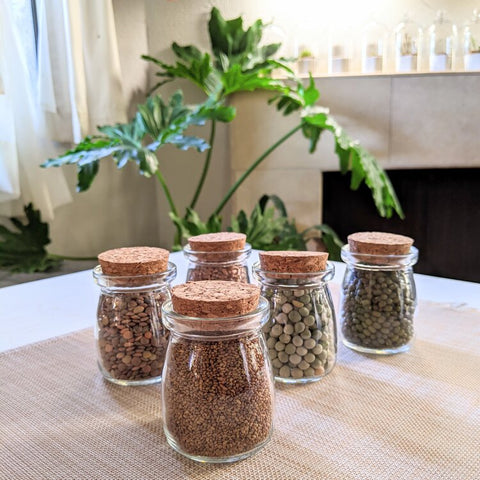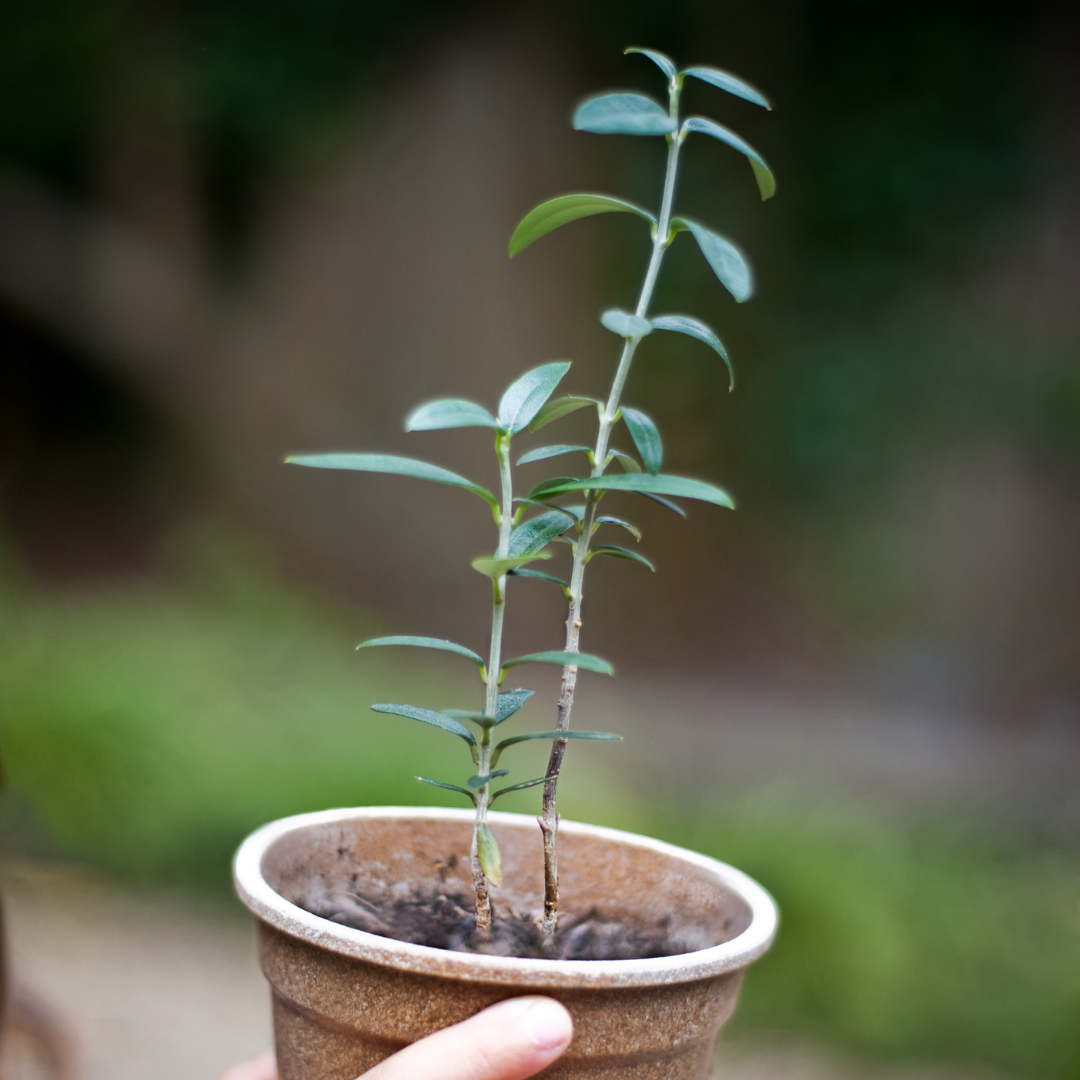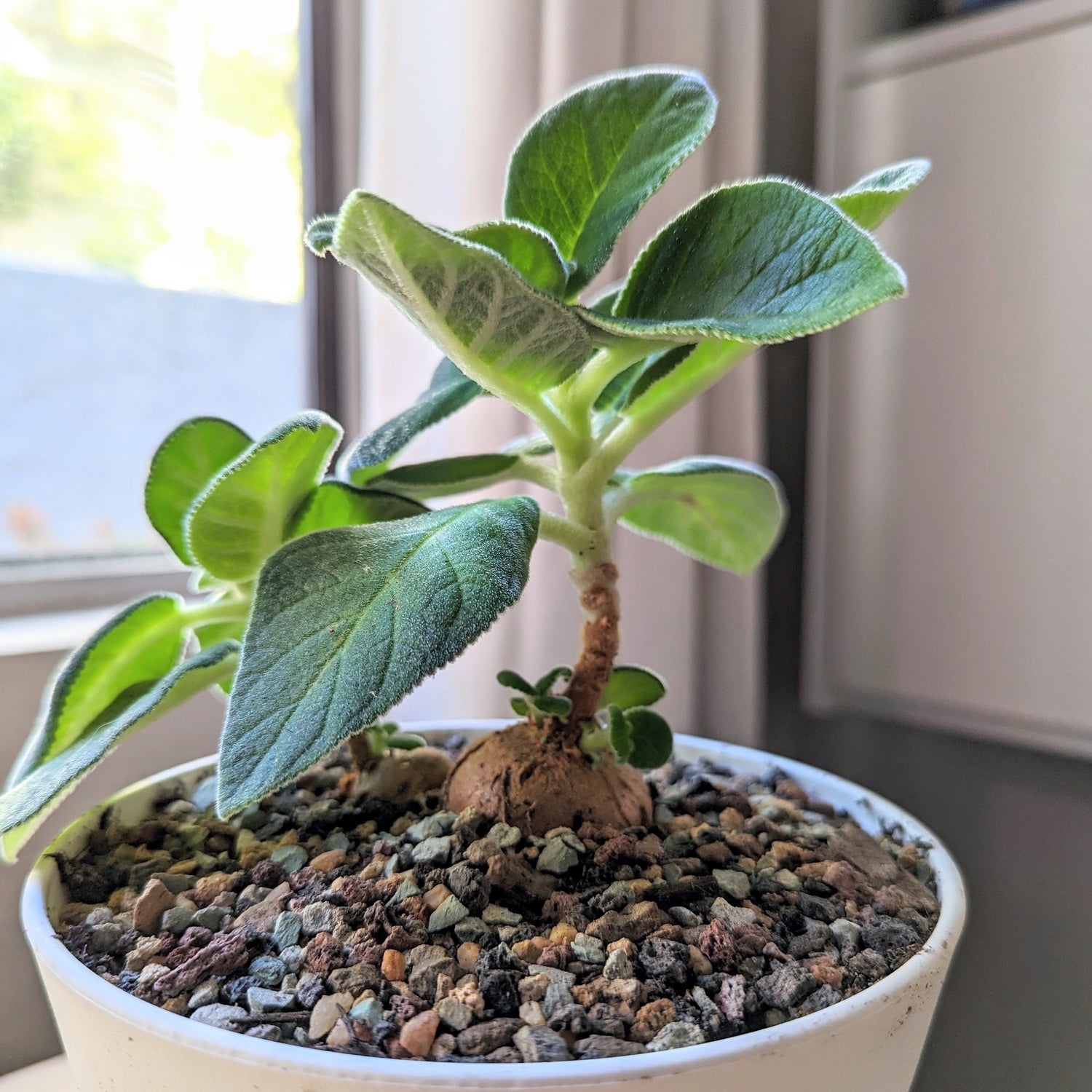There a common misconception that fall and winter means the end of the gardening season, which is simply not true! Now we here at Plantflix are all about indoor gardening, and of course you can keep gardening indoors all year round, however even if you have a patio or full-on gardens outdoors, there are ways to maintain a garden outside as well!

So here are a few different gardening projects you can keep up through these colder months <3
First option: Get that Indoor Jungle Going!
This is the obvious one considering we specialize in houseplant seed varieties :) If you have the adult plants already, overwintering them generally isn’t an issue. However for those of you interested in starting these indoor varieties from seed and are wondering whether you even can start them off in the colder months, the answer is a resounding yes! All you need to do is mimic the conditions these plants need to thrive, which on a small, seedling scale is pretty easy to do. So in particular make sure you have these 3 things covered:
-
Warmth
-
Light
-
Humidity
A drop in any of those three conditions is what usually triggers plants to slow down their growth go into dormancy so to speak, so make sure humidity for seed germination is above 80-90%(pre-soaking is also usually recommended), temperatures are between 70-85F and good light is available 12+hrs. The more a plant matures, the more you can lower humidity, temperature and light(usually not by too much though!). I have more information on successful houseplant seed germination here(if I could make it a requirement to read that guide before starting in the houseplant seed hobby, I would, it’s crucial the seeds are in the right conditions to germinate).

Second Option: Sprouts and Microgreens

This option is so so easy and it’s the perfect gardening activity for those of you that want to grow something edible, especially if you don’t have much room or light. The con is they’re not much of an aesthetically pleasing option, as they’re grown purely for adding that nutritional boost to your diet. It is a fun activity to do, and something that can help satiate that desire to garden!
Microgreens need a little bit more of a setup and light, needing a tray to grow the microgreens as well as soil and a sunny windowsill or grow lights. Basically the process boils down to germinating and growing veggie/herb seedlings, and cutting them once they put out their first set of baby leaves. It’s another great way to add some fresh and nutritionally dense greens into your diet to balance out all those hearty winter foods :) Popular options for microgreens include leafy greens like lettuce or arugula, peas, radishes, beets, broccoli and others!
Sprouts are easier and quicker than microgreens, as the name gives away, they’re just the sprouts, so you can harvest them when the first sign of growth starts to appear. The way you make sprouts is by soaking them for 24hrs, then rinsing them, adding them into a sprouting jar or just a mason jar with a mesh lid, so the moist seeds can still have access to fresh air as the sprouts start to develop, and to keep rinsing then draining the seeds every day or couple of days. Most sprouts are ready within 3-5 days :)
Third Option: Cultivating your windowsill herb/veggie garden

If you’re a big herb and veggie gardener, you have the option of starting a little indoor veggie garden! If you have a bright south-facing window, that’s perfect for veggies, the fruiting varieties in particular need more light, so if you don’t have good natural light, consider using grow lights(I do, and I have the lights I personally use available here!)
You do want to make sure that the varieties you would like to grow are good for container gardening, some plants have root systems that are too expansive and don’t like to be bound up. I have a blog post here on 5 veggies you can grow indoors and their care, some of which need big planters like carrots, beets or potatoes to accommodate their large roots, and then if you don’t have a lot of room, stick to veggies like beans, cucumbers, cherry tomatoes, peppers, leafy greens, strawberries, onion and garlic.
Just about all herbs are great options, but the most popular include basil, thyme, mint, oregano, sage, dill, chives, and rosemary, all of which do great in containers indoors. An herb garden doesn’t have the same light requirements as veggies, but still need more light than houseplants, so an east or west facing window that gets a few hours of direct sunlight can suffice!
Fourth Option: Growing Cold-loving veggies outdoors

If you do have room outdoors, whether it’s a small patio(like mine) or a sizeable garden, you do have the option to populate it with veggies, and there are varieties that prefer colder weather. In particular, if you don’t have the room indoors, or if you are unable to provide the light these veggies require, then growing them outdoors covered is a great option!
However you do have to consider the conditions in your area, we for instance live in San Diego, so there’s more flexibility here with winter gardening, but even in some areas with frost, you can consider leafy greens, onions, carrots, broccoli, parsley, and garlic.
You will want to start the seedlings off indoors unless you already have the veggies in the ground, since seeds do need warmer and more humid conditions to germinate. Furthermore, to protect veggies against hard frosts or cold winds, it’s recommended you cover these veggies, whether it be in a greenhouse, cold frame, or cloche of some sort. That way, you can have fresh veggies and herbs all year round, regardless of where you live :)
Hopefully one of these gardening options works for the situation you have at home :) If you found this post informative, check out these!





